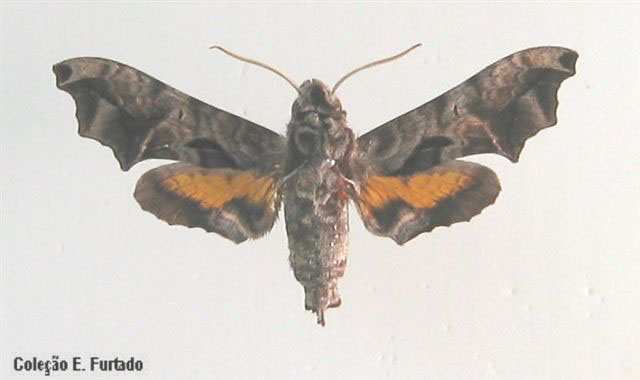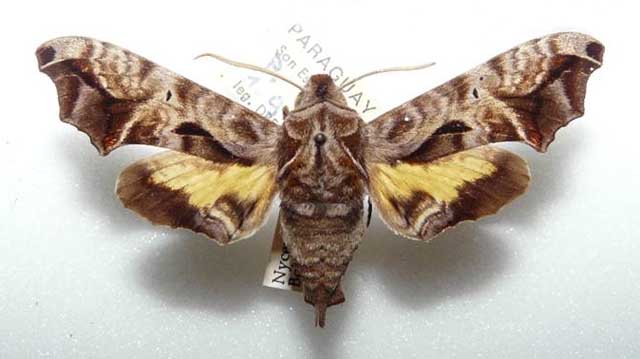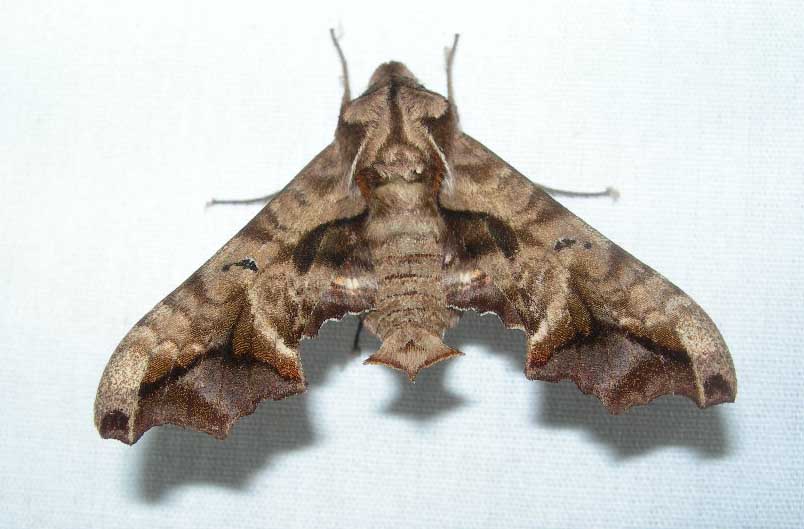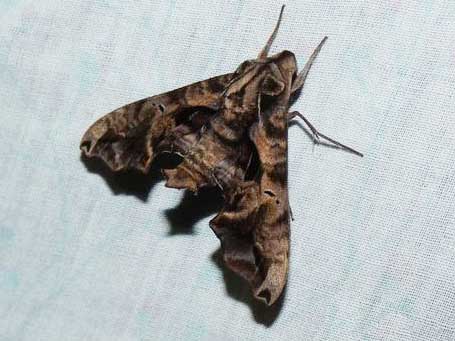Nyceryx alophus alophus
|
|
Updated as per personal communication with Eurides Furtado (Rio Sapucaí, Minas Gerais, Brazil)
Updated as per More, Kitching and Cocucci's Hawkmoths of Argentina 2005, December 2009
Updated as per
AN ANNOTATED CHECKLIST OF THE SPHINGIDAE OF BOLIVIA, December 2009
Updated as per SHILAP publication: Lista de Sphingidae del Uruguay, September, 2010; Msc Gabriela Bentancur Viglione; January 31, 2011
Updated as per personal communication with Larry Valentine (Itanhandu, Minas Gerais, Brazil, October 11, 2011); October 14, 2011
Updated as per personal communication with Ezequiel Bustos (Shilap revta. lepid. 43 (172) diciembre, 2015, 615-631 eISSN 2340-4078 ISSN 0300-5267), January 4, 2016
Updated as per personal communication with Lila Ferrez (Nova Friburgo, Rio de Janeiro, Brazil, March 2022); April 13, 2022
|
Nyceryx alophus alophus
(Boisduval, [1875])
Perigonia

Nyceryx alophus alophus,
male 54 mm, October,
Rio Sapucaí, Minas Gerais, Brazil,
courtesy of Eurides Furtado.
This site has been created by Bill Oehlke.
Comments, suggestions and/or additional information are welcomed by Bill.
TAXONOMY:
Family: Sphingidae, Latreille, 1802
Subfamily: Macroglossinae, Harris, 1839
Tribe: Dilophonotini, Burmeister, 1878
Genus: Nyceryx Boisduval, [1875] ...........
Species: alophus alophus (Boisduval, [1875])
|
DISTRIBUTION:
Nyceryx alophus alophus
(wingspan: males: 54mm; females: probably larger) flies in
Brazil: Minas Gerais, the specimen type locality; Nova Friburgo, Rio de Janeiro (LF) to
Bolivia: Beni (300-800m), Cochabamba (750m); and
Argentina: Misiones (269m), Buenos Aires, Chaco, Corrientes, Entre Rios;
Paraguay: Central: San Lorenzo (PS); and
Uruguay at elevations up to 850m.
Inner margin of tegula not quite as white as Nyceryx continua continua. Pronotum and anterior part of mesonotum more or less variegated with
brown.
Forewing upperside more variegated than Nyceryx continua continua, owing to the lines being more distinct; discal spot narrow, elongate; an
abbreviated subbasal blackish band present.
Hindwing upperside with basal yellow area reaching the inner margin. CATE

Nyceryx alophus, San Lorenzo, Central, Paraguay,
August, 2009,
courtesy of Paul Smith.
FLIGHT TIMES:
Moths are probably on the wing in just about every month.
The specimen pictured at top of page was taken in October.

Nyceryx alophus alophus, Itanhandu, Minas Gerais, Brazil,
October 11, 2011, courtesy of Larry Valentine,
tentative id by Bill Oehlke.

Nyceryx alophus alophus (verso), Itanhandu, Minas Gerais, Brazil,
October 11, 2011, courtesy of Larry Valentine,
tentative id by Bill Oehlke.
ECLOSION:
Adults eclose, usually within three weeks, from pupae formed in flimsy cocoons spun amongst leaf litter.

Nyceryx alophus alophus, Nova Friburgo, Rio de Janeiro, Brazil,
March 2022, courtesy of Lila Ferrez.
SCENTING AND MATING:
Females call in the males with a pheromone released from a gland at the tip of the abdomen.
EGGS, LARVAE, PUPAE:
Larvae feed on and spin a very flimsy cocoon amongst leaf litter.
Return to Sphingidae Index
Return to Dilophonotini Tribe
Goto South American Index




